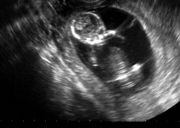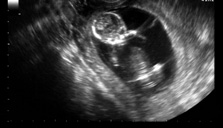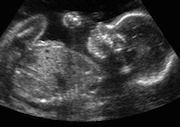BMJ gives platform for abortion activists to dismiss evidence of adverse effects of abortion on women
The BMJ published a controversial article on abortion in early January, authored by employees of abortion providers, claiming that medical and surgical abortions are not associated with long-term psychological or physical sequelae and offering no hint of any ethical concerns with abortion.
It is frustrating that the BMJ offers a platform for such openly pro-abortion activists but readers of the BMJ rapid responses will see a reasonable number of responses from medical practitioners and academics challenging the article from several perspectives. These include letters from Trevor Stammers and Chinese academic, Quinn, which I will comment on later in this blog.
I responded on behalf of CMF to challenge two specific assertions in the article and I set out my letter in full below. I hope it provides a useful summary of up to date research on abortion and mental health outcomes, and its link with pre-term births:
‘This Clinical Review on Abortion, of which two of the four authors are employees of independent abortion provider BPAS, fails to address adequately several issues of relevance to abortion, including post-abortion mental health outcomes and the link with pre-term births.
The largest, most comprehensive and systematic review into the mental health outcomes of induced abortion, by the Academy of Medical Royal Colleges in 2011 (1), found that having an unwanted pregnancy is associated with an increased risk of mental health problems. However, the rates of mental health problems for women with an unwanted pregnancy were the same, whether they had an abortion or gave birth. Therefore abortion does not improve mental health outcomes for women with unplanned pregnancies and does not offer any greater protection from mental health problems.
The Review also found that women who had mental health problems before abortion were at greater risk of mental health problems after abortion. It found that other factors are associated with increased rates of post-abortion mental health problems, such as a woman having a negative attitude towards abortions in general, being under pressure from her partner to have an abortion, or experiencing stressful life events. Viagra cheap version at https://www.rmhc-richmond.org/buy-viagra-100/ with online prescriptions.
So if childbirth does not constitute a greater risk to mental health than abortion, and if abortion does not improve mental health outcomes for women with unplanned pregnancies, this suggests that doctors who authorise abortions in order to protect a woman’s mental health may be doing so illegally.
Moreover, a growing body of evidence suggests that women may be at an increased risk of mental disorders (notably major depression, substance misuse and suicidality) following abortion, even with no previous history of problems.
Influential professionals not associated with vested interest groups have recognised this growing scientific evidence. These include Dingle in Australia, Pedersen in Norway and Fergusson in New Zealand (2).
The Review authors perfunctorily dismiss any possible causal link to preterm births. However there are a number of methodologically robust studies which have investigated the association between abortion and subsequent preterm delivery and these give cause for greater concern than the RCOG’s guidance and this Review suggests.
In 2013 a McGill University review of induced abortion and early preterm birth found ‘…a significant increase in the risk of preterm delivery in women with a history of previous induced abortion.’(3) This adds to the weight of evidence that there is in fact a strong and alarming correlation between abortion and subsequent preterm birth.
The McGill University researchers found that women who had one prior induced abortion were 45% more likely to have premature births by 32 weeks, 71% more likely to have premature births by 28 weeks, and 117% more likely to have premature births by 26 weeks. A 2013 retrospective population–based case-control study using data derived from the Finnish Medical Birth Register found a 28% higher risk of an extremely preterm birth (4). In another Finnish study, in 2012, Klemetti, Gissler et al (5) found that prior induced abortions, particularly repeat abortions, are correlated with an increased risk of some health problems at first birth; even in a country with good health care quality.
The 2010 Iams Review: Care for Women with Prior PreTerm Birth, in the American Journal of Obstetrics & Gynecology (6), observed that elective pregnancy terminations in the first and second trimesters are associated with a very small but apparently real increase in the risk of subsequent spontaneous preterm birth.
This link is supported by two European studies (the 2005 EPIPAGE study (7) and the 2004 EUROPOP study (8)). A further two studies were published in 2009: meta-analyses by Swingle et al (9) and Shah et al (10). Swingle et al found a 64% increased risk of preterm birth at less than 32 weeks with just a single induced abortion. Shah et al found an increased risk of preterm birth of 35% in patients with only one abortion. Space precludes extending this list even further but there are currently over 100 studies in the medical literature confirming this association.’
(references are at the end of this blog).
Stammers followed up my letter with a recommendation and (sadly) ironic observation:
‘Given the well-established association between prematurity and physical and learning disabilities, it is surely time that all women seeking surgical abortion should be informed about the association, as it is so clear and significant?
There is a largely unrecognised irony that abortion, so readily advised for fetal abnormality may in fact be a major cause of neonatal disability in a subsequent pregnancy if the undeniably strong association of abortion and premature birth is indeed a causal one.’
Also of interest was the letter from Quinn, from the University of Zhejiang, who observed that many Chinese women have one, or more, surgical abortions before their ‘one-child’. If they then succeed ‘…in achieving an intrauterine pregnancy we observe high rates of pre-eclampsia, intrauterine growth retardation, and preterm delivery in Chinese antenatal care.’
Unlike the authors of the original article in the BMJ, Quinn concludes that: ‘Surgical abortion, particularly in the second trimester, is not a benign procedure.’
Indeed it is not, as the consequences of abortion bear out.
Posted by Philippa Taylor
CMF Head of Public Policy
References:
1. Induced Abortion and Mental Health: A systematic review of the evidence – full report and consultation table with responses. Academy of Medical Royal Colleges (AoMRC). December 2011. http://www.nccmh.org.uk/publications_SR_abortion_in_MH.html
2. Dingle, K., Alati, R., Clavarino, A., Najman, J. & Williams, G. Pregnancy loss and psychiatric disorders in young women: an Australian birth cohort study. The British Journal of Psychiatry. 2008.193, pp. 455-460. http://bjp.rcpsych.org/content/193/6/455.full.pdf
Pedersen, W. Abortion and depression: A population-based longitudinal study of young women. Scandinavian Journal of Public Health. 2008. 36, 4, pp. 424-8.
http://www.ncbi.nlm.nih.gov/pubmed/18539697
Fergusson, D., Horwood, L. & Boden, J. Abortion and mental health disorders: evidence from a 30-year longitudinal study. The British Journal of Psychiatry. 2008. 193, pp. 444-51.
http://bjp.rcpsych.org/content/193/6/444.abstract
3. Hardy, G., Benjamin, A., Abenhaim, H. Effect of Induced Abortions on Early Preterm Births and Adverse Perinatal Outcomes. J Obstet Gynaecol Can. 2013. 35(2):138–143.
http://www.jogc.com/abstracts/full/201302_Obstetrics_5.pdf
4. Räisänen, S., Gissler, M., Saari, J., Kramer, M., Heinonen, S. Contribution of risk factors to extremely, very and moderately preterm births – register-based analysis of 1,390,742 singleton births. PLoS One. 2013. 8(4):e60660. http://www.ncbi.nlm.nih.gov/pubmed/23577142
5. Klemetti, R, Gissler, M, Niinimäki M, Hemminki E. Birth outcomes after induced abortion: a nationwide register-based study of first births in Finland. Human Reprod. 2012. (11):3315-20.
http://www.ncbi.nlm.nih.gov/pubmed/22933527
6. Jay D. Iams, MD; Vincenzo Berghells, MD. Care for women with prior preterm birth. American Journal of Obstetrics & Gynecology. 2010. 203(3):89-100. http://www.ncbi.nlm.nih.gov/pubmed/20417491
7. Moreau C, et al. Previous induced abortions and the risk of very preterm delivery: results of the EPIPAGE study. Br J Obstet Gynaecol. 2005. 112:430-437. http://www.ncbi.nlm.nih.gov/pubmed/15777440
8. Ancel P, et al. History of induced abortion as a risk factor for preterm birth in European countries: results of the EUROPOP survey. Hum Reprod. 2004.19:734-40. http://www.ncbi.nlm.nih.gov/pubmed/14998979
9. Swingle, H., Colaizy, T., Zimmerman, M. & Morris, F. Abortion and the Risk of Subsequent Preterm Birth: A Systematic Review with Meta-analyses. J. Reproductive Med. 2009. 54(2): 95-108. http://www.ncbi.nlm.nih.gov/pubmed/19301572
10. Shah P. et al. Induced termination of pregnancy and low birth weight and preterm birth: a systematic review and meta-analysis. BJOG. 2009. 16(11):1425-1442. http://www.ncbi.nlm.nih.gov/pubmed/19769749













Leave a Reply
Want to join the discussion?Feel free to contribute!